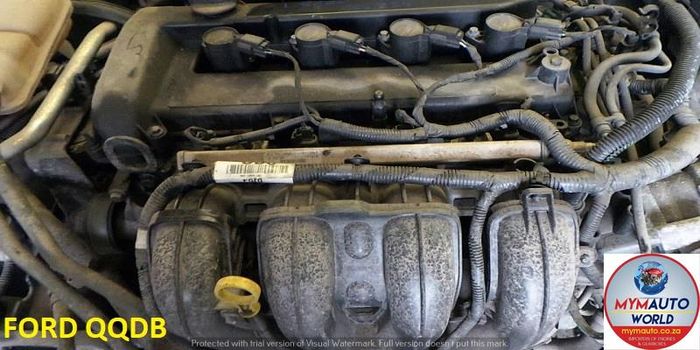Enhance Your Ride with a High-Quality Opel Corsa Engine
Enhance Your Ride with a High-Quality Opel Corsa Engine
Blog Article
Exploring the Inner Operation of a Compact Car's Engine System
As chauffeurs, we commonly take for provided the complex processes that take place within the confines of our car's engine system. In this exploration of a small lorry's engine system, we will certainly unwind the inner workings of this mechanical symphony, losing light on the mysteries that drive us onward on our daily trips.
Combustion Process Introduction
The burning procedure in a compact vehicle's engine system is an essential device that successfully converts gas right into power to power the car. This process happens within the combustion chamber of the engine, where gas and air mix, fire up, and create controlled explosions. The combustion process includes four main phases: intake, compression, exhaust, and power.
Throughout the intake phase, the piston relocates downward, reeling in a mix of air and fuel right into the burning chamber. The next stage, compression, includes the piston moving up, compressing the air-fuel blend to raise its potency. Ultimately, in the power stage, the ignition system sparks the compressed mixture, causing a quick expansion of gases that compels the piston pull back. This downward activity produces the power needed to drive the automobile. In the exhaust stage, the burned gases are gotten rid of from the burning chamber via the exhaust shutoff, preparing the chamber for the following cycle. This cyclic burning process is essential to the procedure of a compact automobile's engine system, guaranteeing reliable power conversion for propulsion.
Piston and Cyndrical Tube Interaction

The piston's exact fit within the cyndrical tube is essential for preserving ideal compression and avoiding energy loss throughout burning. Limited clearances between the piston and cyndrical tube walls make sure reliable sealing, allowing the piston to move efficiently without enabling gases to leakage past. Appropriate lubrication is also essential to decrease rubbing and put on between these parts, enhancing durability and efficiency.
In addition, the style and materials made use of in producing the piston and cyndrical tube influence engine effectiveness and sturdiness. Modern engines often use light-weight yet resilient materials like aluminum alloys for pistons and cylinder liners to minimize inertia and boost thermal effectiveness. Generally, the unified communication between the piston and cylinder is fundamental to the engine's performance and general performance.
Gas Injection System Performance
Gas injection systems in portable car engines play a vital function in exactly delivering gas to the burning why not look here chamber for effective and controlled ignition. The gas shot system works by injecting fuel into the burning chamber at the optimal moment throughout the engine's procedure (opel corsa engine). This specific timing makes certain that the gas mixes equally with the air for proper burning, bring about enhanced fuel performance and minimized exhausts
There are mostly two types of gas shot systems made use of in compact vehicle engines: port gas shot (PFI) and straight fuel shot (DFI) PFI systems inject fuel right into the consumption port prior to the consumption shutoff, while DFI systems inject gas directly right into the combustion chamber. Both systems have their benefits, with DFI supplying much better fuel atomization and PFI providing an extra economical solution.
Recognizing Engine Cooling Devices
Efficient operation of a small car's engine depends greatly on the performance of its cooling devices. The air conditioning system check over here in a compact vehicle usually consists of numerous components functioning together to regulate the engine temperature. Comprehending these engine air conditioning systems is essential for maintaining the efficiency and durability of a portable car's engine system.

Exhaust System Parts Explained
The optimal performance of a compact vehicle's engine cooling systems depends on a complementary system recognized as the exhaust system, which consists of different crucial elements for making certain efficient emissions and have a peek here engine performance. The exhaust manifold gathers exhaust gases from the engine's cyndrical tubes and routes them to the catalytic converter.
One critical element of the exhaust system is the oxygen sensor, which checks the oxygen degrees in the exhaust gases to assist regulate fuel intake and guarantee optimal engine performance. opel corsa engine. In addition, the resonator may exist in some exhaust systems to reduce noise degrees. Generally, the exhaust system plays a crucial duty in keeping engine efficiency, minimizing damaging exhausts, and guaranteeing a quieter driving experience for small automobile owners

Verdict
To conclude, the compact lorry's engine system is a complex mix of elements that interact to help with the combustion process, convert fuel into power, and eliminate waste gases. Recognizing the inner functions of the engine system, consisting of the piston and cylinder interaction, fuel shot system, engine air conditioning mechanisms, and exhaust system parts, is important for preserving ideal efficiency and effectiveness of the automobile.
The combustion procedure in a compact car's engine system is a vital system that successfully converts gas right into energy to power the automobile.Fuel shot systems in compact vehicle engines play a vital role in exactly supplying fuel to the burning chamber for effective and controlled ignition.There are mainly 2 kinds of fuel injection systems used in small vehicle engines: port gas injection (PFI) and direct fuel injection (DFI) Recognizing these engine cooling devices is crucial for maintaining the efficiency and long life of a compact lorry's engine system.
The optimal functioning of a compact car's engine cooling devices depends on a corresponding system understood as the exhaust system, which consists of numerous necessary elements for making sure efficient exhausts and engine efficiency.
Report this page